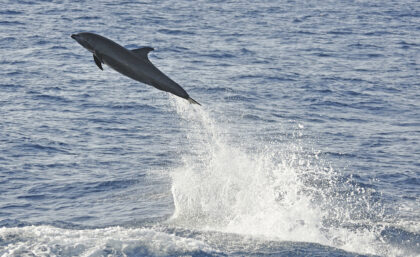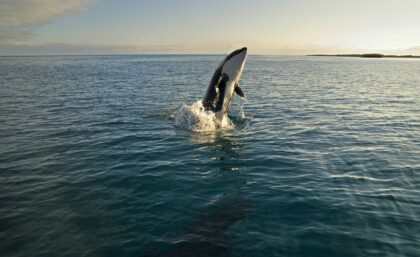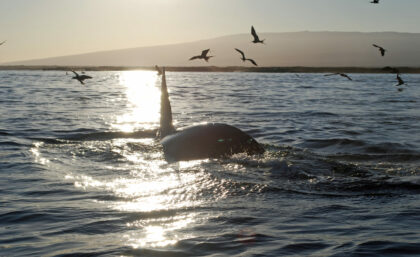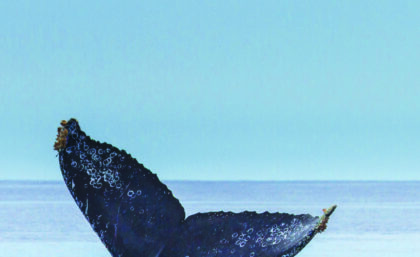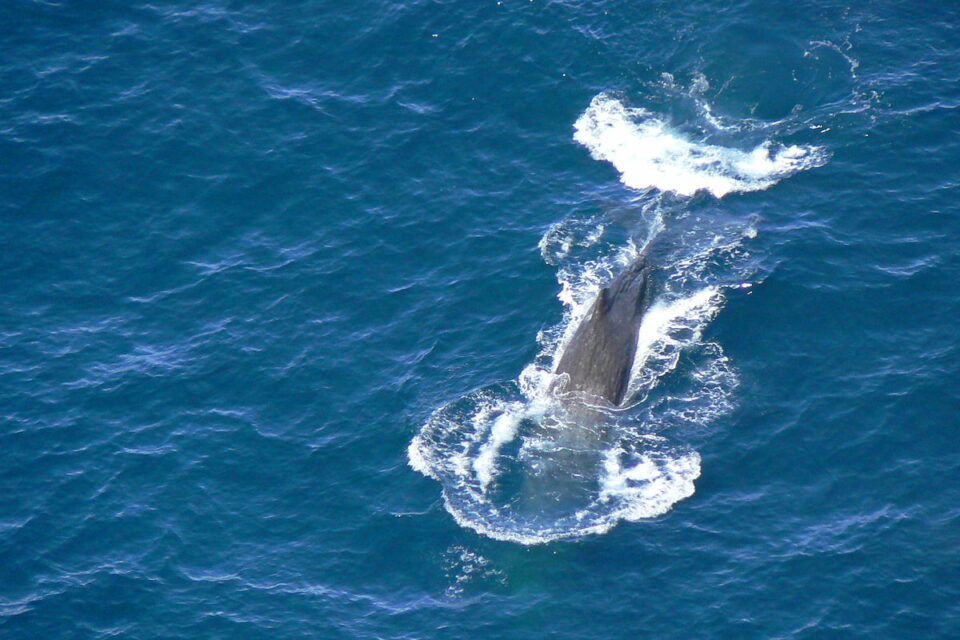
Common name:
Whales, dolphins and porpoises
Scientific name:
Cetaceans
Spanish name:
Cetáceos
Conservation status:
Least Concern
Average lifespan:
Up to 50 years
Average size:
1.5 - 16 metres
Average weight:
100 kilogrames – 30 tonnes
Overview
The Cromwell current’s upwelling in the western waters of Galapagos draws in many residents and transient species of cetaceans, particularly in the region between Isabela and Fernandina islands.
Types of cetaceans can be distinguished by their mode of feeding, typically classifying them into baleen whales (filter feeders) and toothed whales (hunt and eat). There are 24 different species of cetacean that have been recorded within the Galapagos Marine Reserve, many being perennial (all-year-round) inhabitants, with a select few, namely blue whales and humpback whales, paying seasonal visits to Galapagos waters. While not native to the Archipelago, three species of dolphin – bottlenose, spinner and common dolphins – pay frequent visits to the islands and are the most commonly seen cetacean in Galapagos.
Cetaceans in Galapagos
Photo gallery
Click an image to view larger
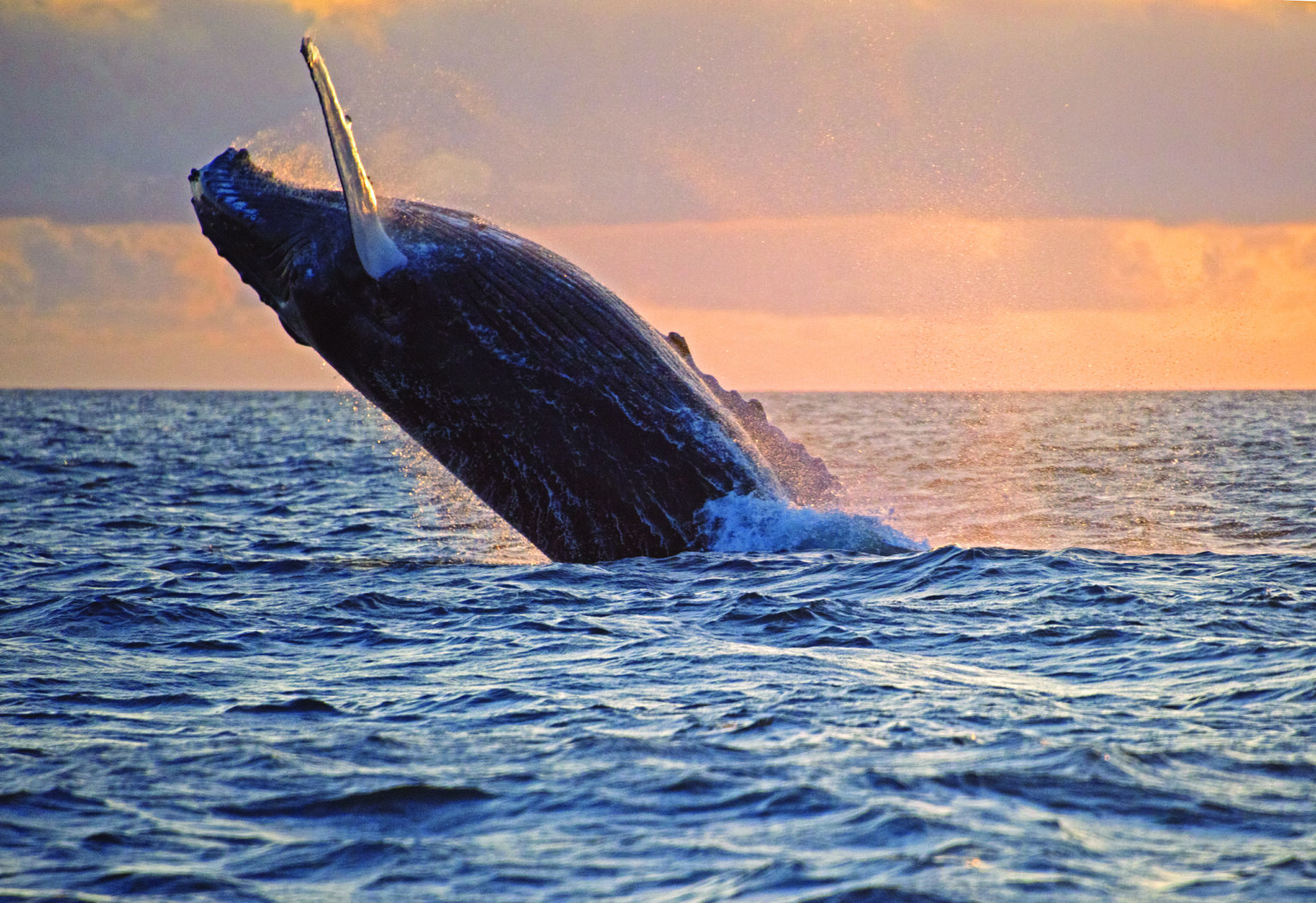
How you can help
Please help us conserve the endangered wildlife of Galapagos by donating today.
Read more about cetaceans in Galapagos...


